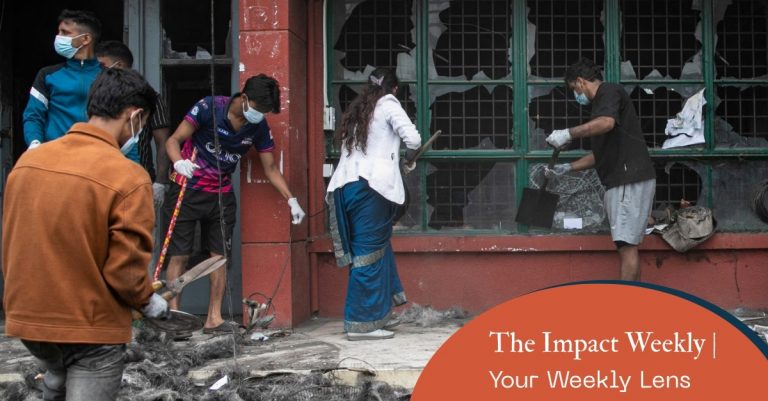Nepal finally released official poverty data last June 2024 after a 12-year-long absence of it. The last assessment was conducted in 2010/11 using the Nepal Living Standard Survey (NLSS) – III, which reported a national poverty headcount of 25.6%, decreasing from 31% in 2003/04.
The poverty headcount was 42% in 1995/96 when the country first administered the NLSS to objectively measure its people’s living standards and determine their poverty level.
20.27% of the population are poor
The recent Nepal Living Standard Survey IV has established a new poverty line considering the improvements in household consumption, along with political and administrative changes, as well as the goal of becoming a middle-income country.
According to the revised poverty line, an individual in Nepal is considered poor if their annual per capita total consumption expenditure is less than NRs. 72,908.
The survey depicts that the country has fared poorly in reducing its poverty over the past 12 years. Currently, 20.27% of the population lives below this new poverty threshold which was 25.16% in 2010/11.
| The previous poverty line was NRs 19,261 based on the minimum cost of daily essentials. When adjusted for inflation, this figure would rise to NRs 42,845. However, the new poverty line has been set at over NRs 72,908, reflecting changes in consumption patterns that have increased spending needs. If the benchmark had remained at NRs 42,845, the poverty rate would be just 3.57%. |
The incidence of poverty is notably higher in rural areas (24.66%) compared to urban areas (18.34%). It is the highest (34.16%) in the Sudurpaschim Province and lowest in the Gandaki Province (11.88%).
Table: Poverty headcount (1995-96 to 2022-23)
| 1995/96 | 2003/04 | 2010/11 | 2022/23 | |
| Nepal | 41.76 | 30.85 | 25.16 | 20.27 |
| Urban | 21.55 | 9.55 | 15.46 | 18.34 |
| Rural | 43.27 | 34.62 | 27.43 | 24.66 |

| Estimation of the 2023 Official Poverty Line The national poverty line is the aggregate of the food consumption and the non-food consumption expenditure, stated as poverty lines. Like in other countries in South Asia, Nepal’s poverty line is defined using the Cost of Basic Needs (CBN) approach. According to the CBN, a poverty line is the minimum expenditure needed by an individual to fulfill their basic food and non-food needs. Based on the food consumption patterns of households in the NLSS, and the average cost per calorie, a food poverty line is estimated. This line quantifies the cost of purchasing basic food items that fulfill a minimum caloric requirement. The food poverty line is augmented with an allowance to meet basic non-food needs (non-food poverty line). The new food poverty line is NRs. 35,028 per person per year and the non-food poverty line is NRs 37,879. The absolute poverty line is the total monetary value of basic food and non-food needs and defines the minimum acceptable standard of living in the country. Individuals whose consumption expenditures are below this minimum monetary threshold are identified as poor. |
In addition to the headcount ratio, the report introduced two complementary measures to assess the incidence of poverty: i) the poverty gap and ii) the squared poverty gap.
The poverty gap index offers a more nuanced measure than the headcount ratio, which merely counts all individuals below the poverty line in a population and treats them as equally poor. It measures the degree of poverty by calculating how far, on average, the poor are from the poverty line. A Poverty Gap index of 0 indicates no one is below the poverty line, and a value of 100 indicates zero income for all individuals.
The NLSS-IV reveals that the poverty gap index stands at 4.52%, indicating approximately NRs. 94.71 billion is required to raise the poor to the minimum welfare threshold. The average shortfall of mean income is higher in rural areas at 5.64% compared to 4.03% in urban areas.
Similarly, as the headcount index and the poverty gap do not measure the inequalities among poor individuals, the poverty severity among the poor is measured by the Squared Poverty Gap.
The squared poverty gap index, also known as the poverty severity index, is an extension of the poverty gap index. It is calculated by averaging the squares of the poverty gap ratios. This approach gives greater weight to individuals whose incomes fall further below the poverty line, highlighting the severity of poverty among the poor, which according to NLLS-IV is more severe in rural areas (1.91%) than in urban areas (1.29%).
The survey which contains information on a wide range of topics related to household welfare was conducted from a representative sample of 9,600 households using an updated sampling frame from the 2021 Population Census which reported Nepal’s population to be 29.16 million.
(Compiled from NLSS-IV by Farsight Impact)





